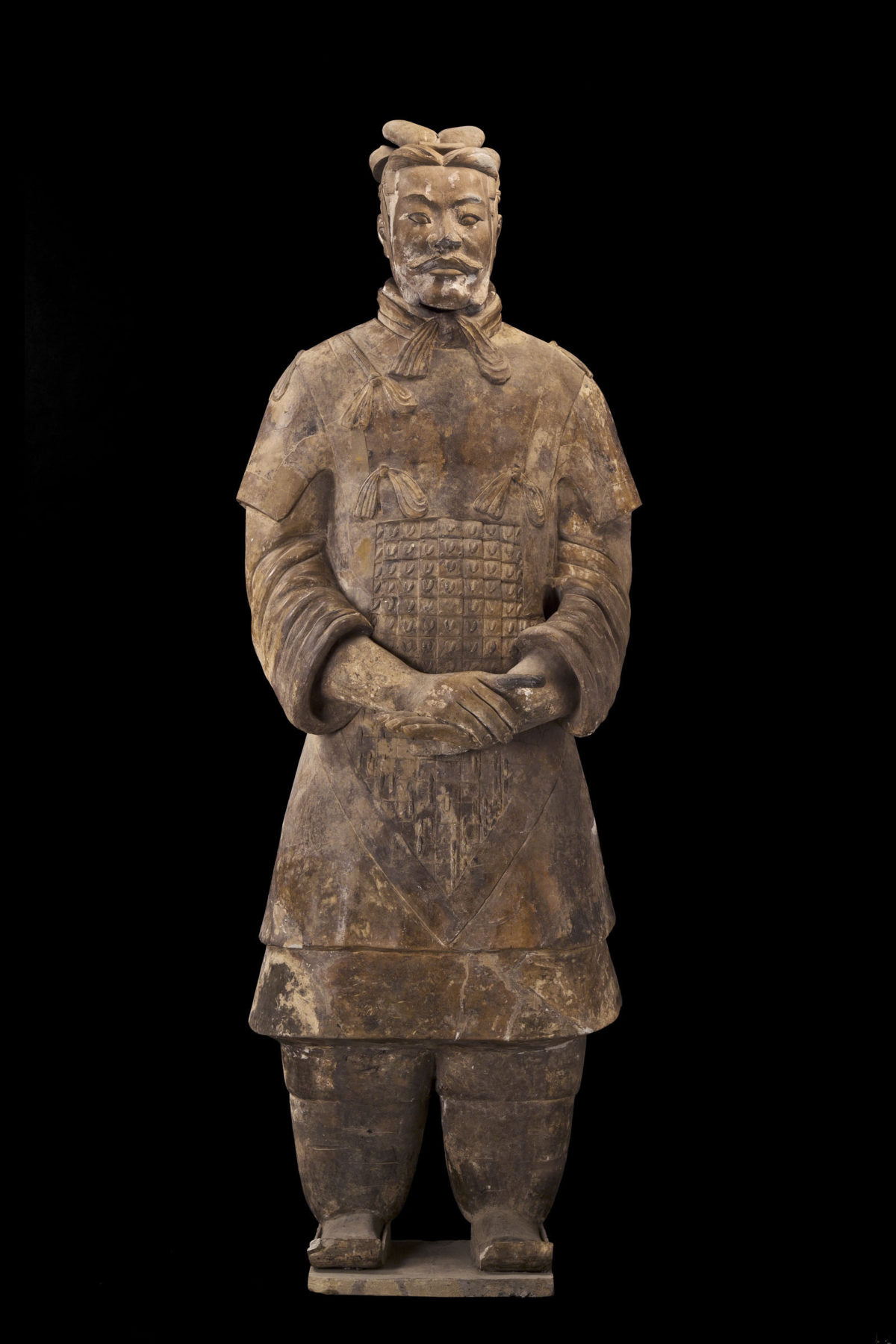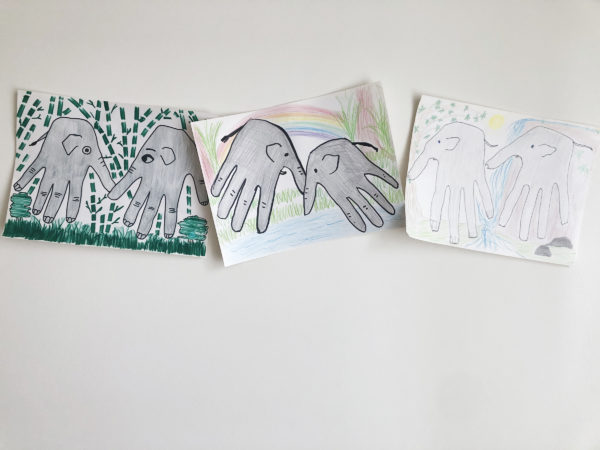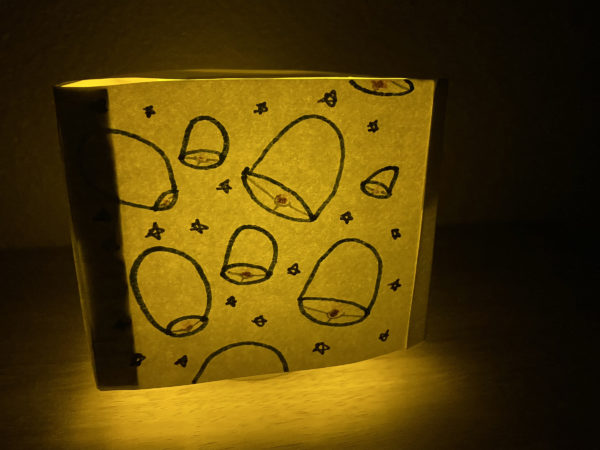Video
China’s Terracotta Army
In groups, students will research and present information about the First Emperor’s accomplishments and legacy.

Armored General
Common Core Standards
ELA-Literacy. WHST.6-8.1 Write arguments focused on discipline-specific content; 6-8.2 Write informative/explanatory texts, including the narration of historical events, scientific procedures/ experiments, or technical processes; 6-8.4 Produce clear and coherent writing in which the development, organization, and style are appropriate to task, purpose, and audience.
Content Standards (California)
History/Social Science: 6.6 Students analyze the geographic, political, economic, religious, and social structures of the early civilizations of China; 6.6.5. List the policies and achievements of the First Emperor (Qin Shihuang) in unifying northern China under the Qin dynasty.
INTRODUCTION (5 min.)
Free-write Prompt: Think about the role playing we did yesterday. Now that the First Emperor (Qin Shihuang) has all of China on the same page, brainstorm what he might do with his “free time.”
Vocabulary Extension (from the Jigsaw readings)
Chariot = small carriage drawn by a horse
Ceramics = the art of making and decorating pottery (inorganic, nonmetallic materials)
Tumulus = an ancient burial mound
Centralize = to control activities under a single authority
Conquest = gaining control of a place or people, often by use of military force
Mausoleum = a building for tombs
Regime = period of rule by an authoritarian government
Prestigious = inspiring respect and admiration
Hierarchy = a system in which people are ranked, some people having more authority than others
Entomb = to place into a tomb
Immortality = the state of living forever, never dying nor decaying
Millennia = plural of millennium (millennium = one thousand years)
Ingenuity = cleverness
Arsenic = a poisonous chemical
Sacrifice = an act of slaughtering an animal or person or surrendering material possessions as an offering
Inhumane = lacking compassion during suffering
CLASS ACTIVITY (10 min.)
Discussion
- Ask students to share what they think the First Emperor’s daily life might look like once he got all of his ruling systems in place. Then expand the discussion to think about legacy. What is a legacy?
- Ask students to contribute to a class definition of legacy and write it on the board.
- Then, based on the role play from the previous lesson, ask students to identify the First Emperor’s legacy. Which of his ideas do they think are still in place today?
CLASS ACTIVITY (40 min.)
Jigsaw, Part 1 – Expert Groups
- Introduce the research activity by explaining that students will be exploring one of the First Emperor’s greatest legacies, the terracotta warriors.
- Give a brief overview by showing some photos to students, a map of the believed burial complex, and providing a succinct summary of its original purpose and design (see Appendix VI).
- Explain that students will learn the details of who, what, where/when, and why about the the terracotta warriors in groups, and later teach what they learn to their peers.
- Divide students into “expert groups” (teacher should pre-select these groups and may structure based on how well students work together, and/or by ability).
- Assign each group a topic (see below) and give them their expert article (see below) to read together (provide enough copies for each member of the group). Each student’s goal should be to become an expert on their group’s topic because they will each be teaching other students about this material. They should use the Expert Group Planning Guide (see Appendix VII) to fill in notes about their topic, as this will guide their talking points when they meet with a new group. Expert groups should be encouraged to talk to each other, discussing their article and deciding which facts are most important to communicate when they meet with their new group.
*Elementary teachers may adapt this activity by providing shortened summaries of the articles for students to read and/or providing close passage notes to help students identify important information from the text.
**MS/HS teachers may adapt this activity by additionally asking expert groups to come up with 1-2 quiz questions on their topic to be included in a class-made quiz and administered later in the week. This type of quiz not only helps groups to decide what is most important in their reading, but also empowers students to have a say in what they feel is important to know – a great 21st century skill.
WHO (medium difficulty)
Who were the builders that created his Terracotta Army? How many builders were there, and how did they become chosen for the job?
WHAT (medium difficulty)
-
- Provide a description of what exactly is included in the Terracotta Army.
- What are the soldiers made of, and how did they look diff erent in the First Emperor’s time than today? What was the method for producing so many Terracotta soldiers so quickly?
WHERE/WHEN (less difficult)
-
- Where were the Terracotta Warriors discovered?
- When were the Terracotta Warriors discovered?
- When were the soldiers built, and how long did it take?
WHY (more difficult)
See: Explore Religious Funerary Practices in Ancient China
-
- Why did The First Emperor wish to be buried in such an elaborate manner?
- What did the ancient Chinese believe about the afterlife that influenced The First Emperor’s design?
- What similarities do you see between Chinese beliefs of the afterlife and those of other ancient civilizations?
Jigsaw, Part 2 – Jigsaw Groups
Students will rotate into new groups to teach each other what they have learned and learn from others. Remind students that everyone is responsible for learning all of the information. (Teacher should pre-select jigsaw groups so that at least one member from each expert group is in each group). Give students adequate time to teach members of their new group the information. Suggested order of presentations is What, Where/When, Who, and Why.
Teacher may prompt students when the next presenter should begin. Students should take notes on their Jigsaw Notes handout as their peers present (see Appendix VIII).
HOMEWORK
Reflection: The First Emperor had several enduring legacies, the Terracotta Army among the most famous. Have students compose a brief reflection paper (or poem or art collage) describing what they hope their legacy (or legacies) will be, who it will impact, and how. (For students who need more support, ask them to begin by identifying the legacies of one of their role models or favorite celebrities or athletes.)
This curriculum was designed by World Savvy in partnership with the Asian Art Museum.






